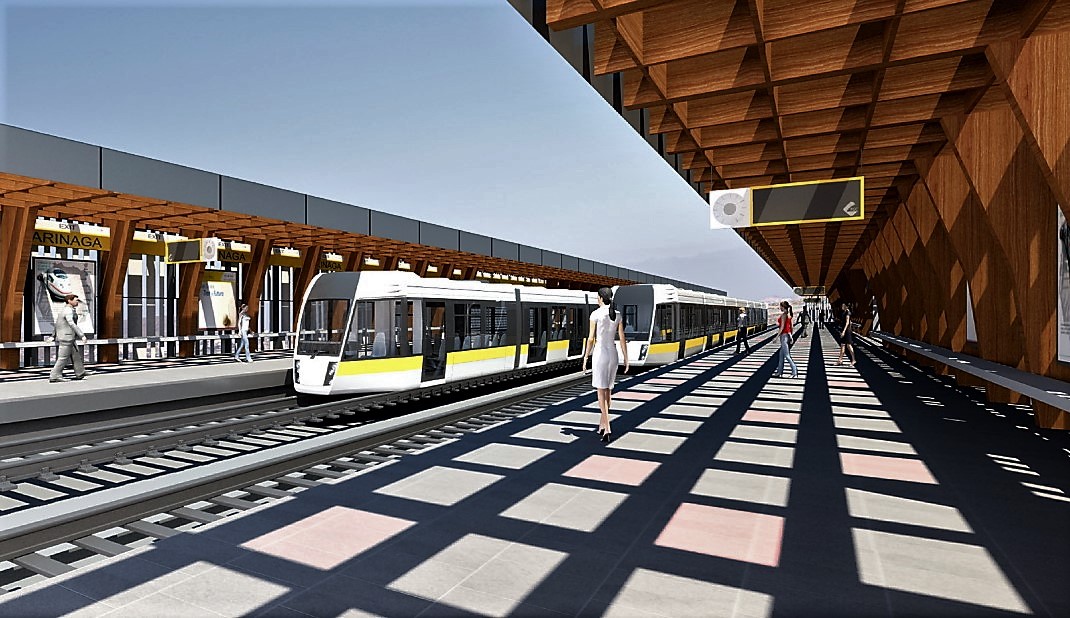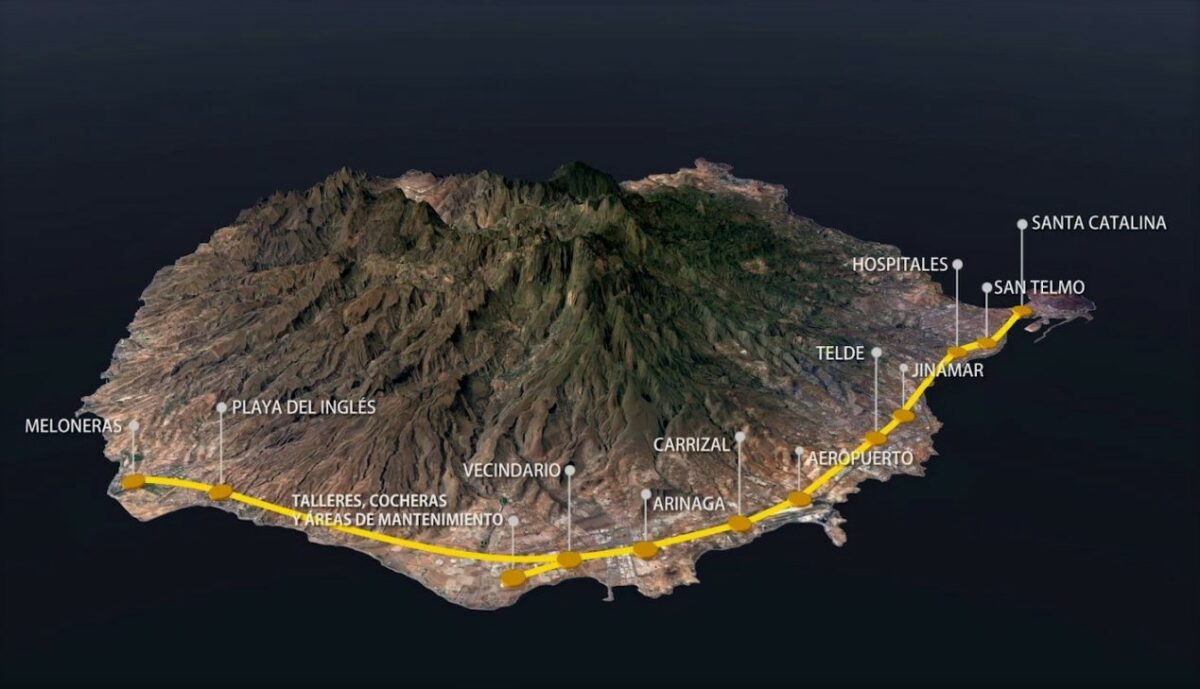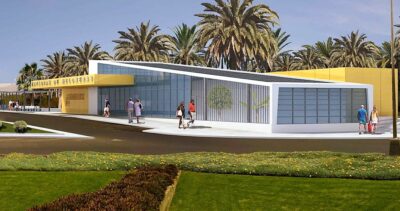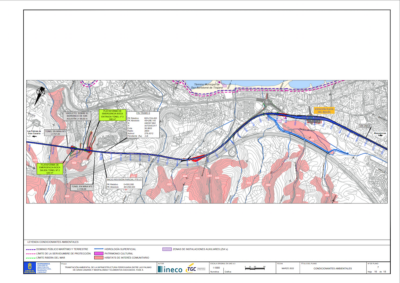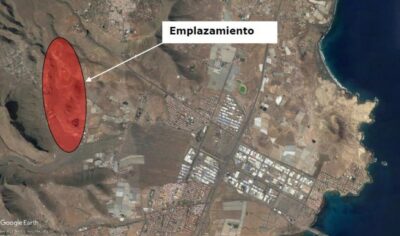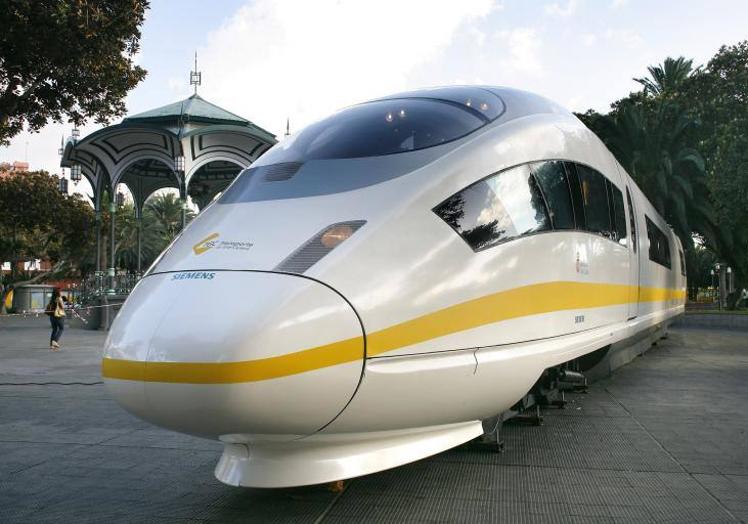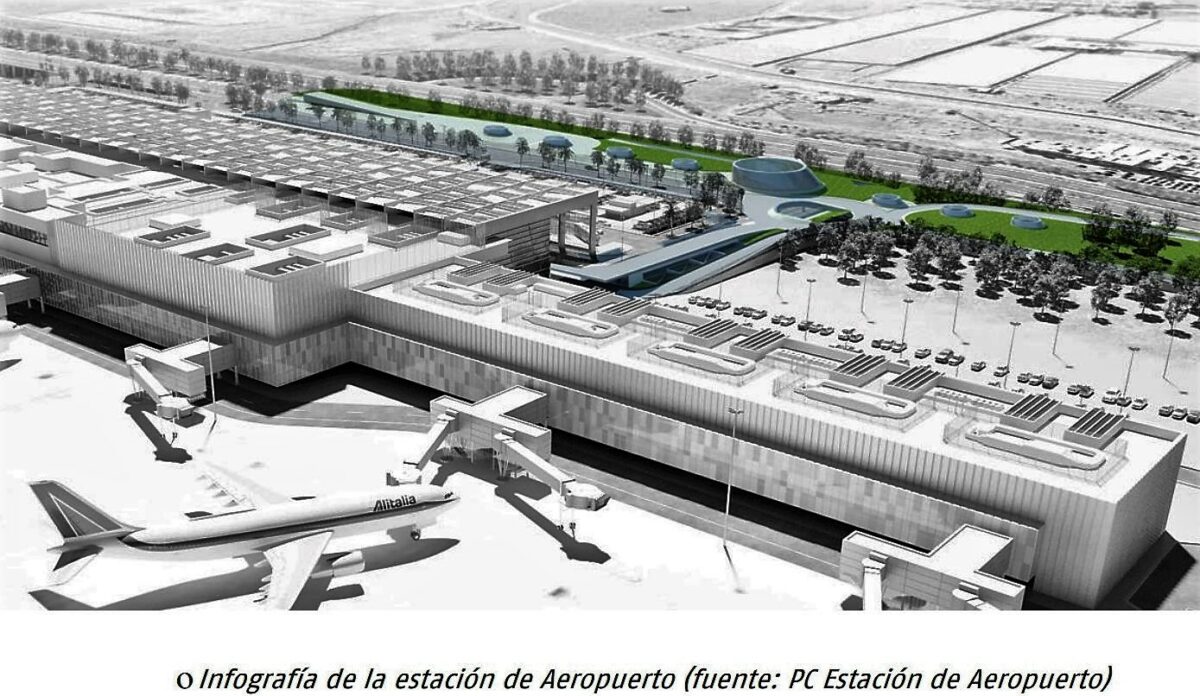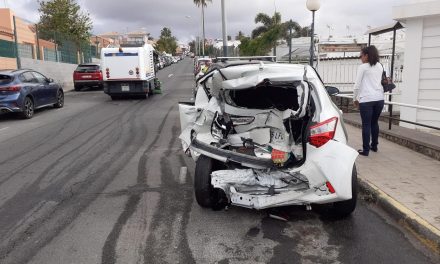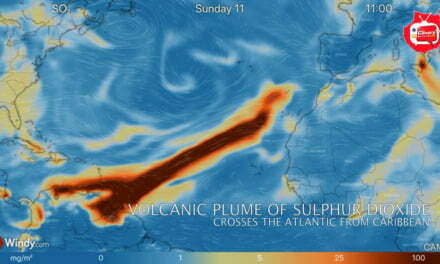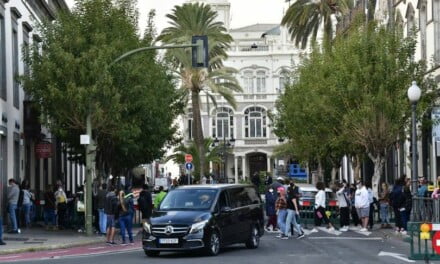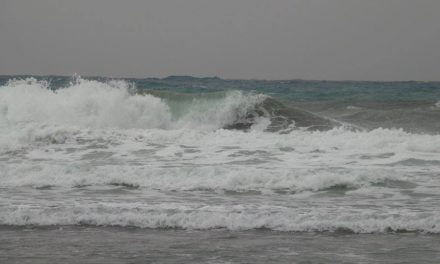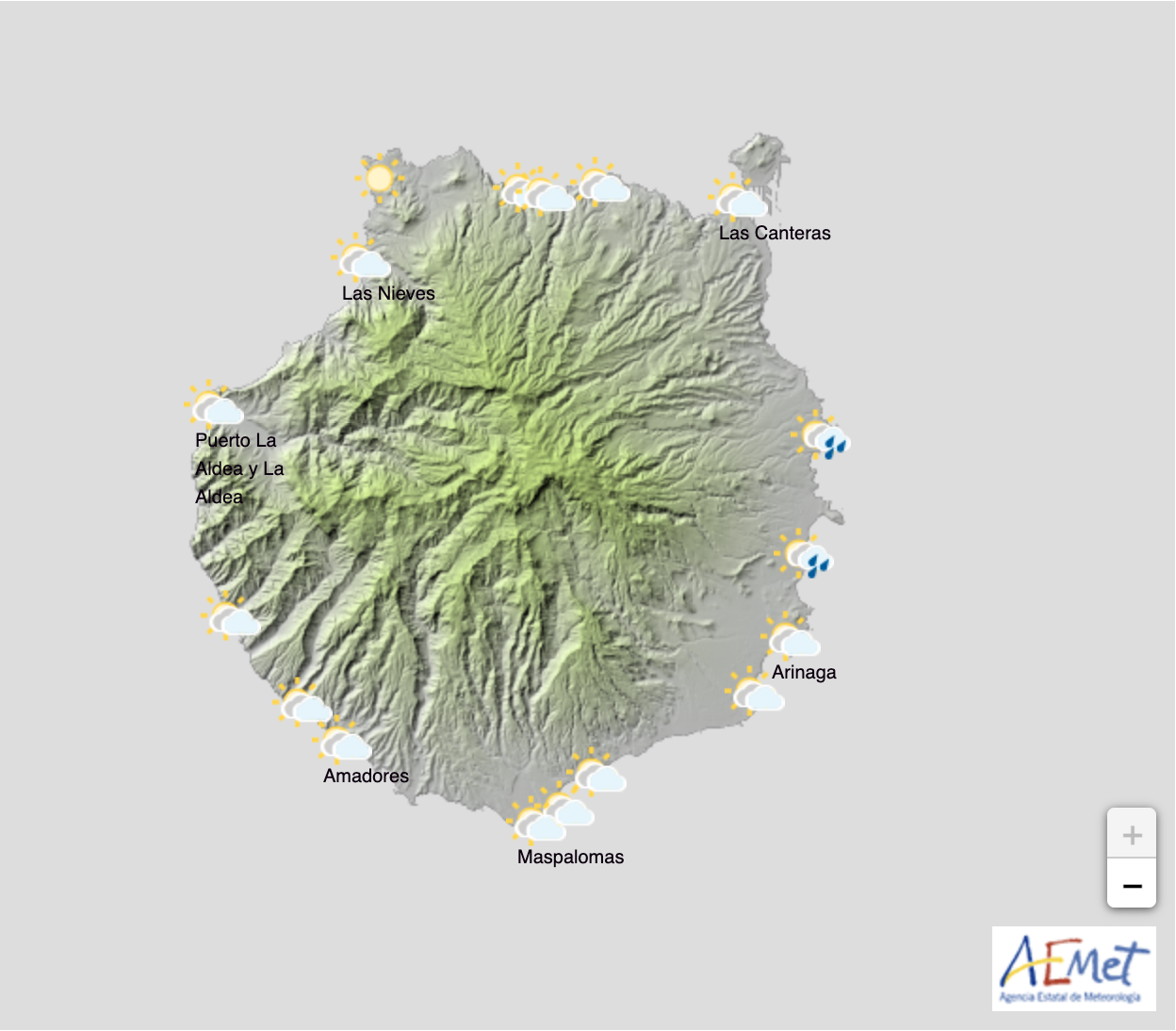The Gran Canaria Cabildo (island government) has requested that the Environmental Authority of Gran Canaria (Órgano Ambiental de Gran Canaria – OAGC) initiate the ordinary environmental impact assessment of the railway infrastructure project planned to connect the north and the south of the island, travelling along the east coast, between Las Palmas de Gran Canaria and Maspalomas, including associated elements, in order to formulate the official declaration necessary to launch the initiative. A project that entails an investment of approximately €1.65 billion and an estimated execution period of around 10 years.
. Once declared then funding will be the final piece of the puzzle in a journey that has last nearly 15 years, to get to this point.
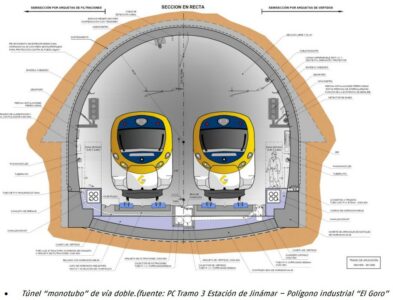 Specifically, the project defines a high-performance commuter rail line with a design speed of 160 kilometres per hour, spanning a length of 57.84 kilometres, and 11 strategically located stations functioning as true intermodal hubs. There will be a double track between San Telmo Station and Playa del Inglés Station. At the originating end, between Santa Catalina Station and San Telmo Station, as well as at the final end, between Playa del Inglés Station and Meloneras Station in Maspalomas, there will be a single track.
Specifically, the project defines a high-performance commuter rail line with a design speed of 160 kilometres per hour, spanning a length of 57.84 kilometres, and 11 strategically located stations functioning as true intermodal hubs. There will be a double track between San Telmo Station and Playa del Inglés Station. At the originating end, between Santa Catalina Station and San Telmo Station, as well as at the final end, between Playa del Inglés Station and Meloneras Station in Maspalomas, there will be a single track.
The Island Corporation also highlights that this is a fully intermodal and sustainable system that will include solar panels at all stations and a self-consumption (auto-consumo) wind farm for the operation of the infrastructure.
After analysing all possible interurban public transportation systems, the Environmental Impact Study in Phase A justifies the high-performance commuter train as the solution best suited to the specific characteristics of the daily reality of island mobility, providing speed, regularity, reliability, safety, comfort, sustainability, and greater socio-economic profitability.
In Phase B of the Environmental Impact Study, the environmental impacts of the project are identified, assessed, and evaluated during both the construction and operation phases. Appropriate corrective and compensatory measures are proposed to enhance and maximise positive effects.
Thus, once the documentation submitted by the substantive authority has been reviewed by the OAGC, the Gran Canaria Environmental Authority, it will issue the Environmental Impact Statement, a mandatory and definitive report that assesses the integration of environmental aspects into the project.
All of this will enable the determination of the conditions to be established for the proper protection of the environment and natural resources during the execution and operation of the project.
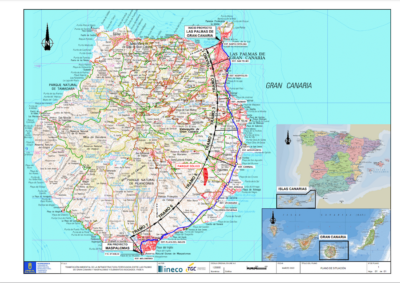 The Cabildo de Gran Canaria, under the presidency of Antonio Morales, in April announced completion of the required Building Information Modelling (BIM) of the railway construction project between the capital and the south, a three-dimensional digital representation of the seven sections that make up the 57.8-kilometre route, the 11 planned stations along the route, and all the train facilities.
The Cabildo de Gran Canaria, under the presidency of Antonio Morales, in April announced completion of the required Building Information Modelling (BIM) of the railway construction project between the capital and the south, a three-dimensional digital representation of the seven sections that make up the 57.8-kilometre route, the 11 planned stations along the route, and all the train facilities.
Funded by the Spanish State budget, as have been the rest of the more than €32 million already invested so far in the train projects and studies, the BIM model includes every detail of the railway down to the last screw.
Developed by Ineco, a state-owned engineering and consulting company under the Ministry of Transport and Mobility, the Gran Canaria train BIM model “is the first of its kind for an infrastructure of this size in Spain,” announced Miguel Ángel Pérez, Vice President of the Cabildo at the time.
The BIM modelling “reduces risks and uncertainties” in the construction and subsequent operation of the line, said Pérez, who believes that this guided mode of transportation, in addition to being “fast, punctual, sustainable, and affordable,” will allow travel between the capital and the south “without traffic congestion.”
According to Pérez, its implementation is crucial for achieving “a modern, sustainable, digital, and resilient Gran Canaria,” and its profitability should be measured not only in economic terms but also in social and environmental terms.
Using wind and hydrogen
Wind energy is to be used to generate power for the creation of hydrogen, and the hydrogen will be used to fuel the train. That’s how the Gran Canaria train would operate, being not only 100% sustainable and reducing current CO2 emissions into the atmosphere but also contributing to the decarbonisation of mobility along the island’s main corridor, said the Pérez.
The remaining three pending tasks include obtaining the favourable declaration of impact assessment (in progress), land expropriations, and securing the necessary funding, estimated to be €1.65 billion, for the implementation of the project.
The declaration of impact assessment is currently being processed by the Environmental Authority of Gran Canaria, and the initial land expropriations “can be carried out at any time.” However, the precise funding for the construction of this commuter railway remains uncertain.
In this regard, Pérez suggested that, without ruling out European funds, the Cabildo, the Canary Islands government, and the central government “should consider advanced funding” to initiate the works as soon as possible.
Out of the total 57.8 kilometres the line will run, 33km will run through tunnels, both natural and artificial, and nearly 5 km will be on viaducts along the surroundings of the island’s main road corridor, the southern highway (GC-1), which carries 180,000 vehicles daily and is often congested. Pérez made clear their belief that the train will reduce traffic congestion on the GC-1.
30m+ Passenger Journeys a Year
Regarding demand and timelines, it is estimated that the line will transport more than 30 million passengers per year, which would make it the fourth most demanded railway in Spain. The plan is for trains to pass each station every 15 minutes, with each train having a capacity of 240 seats and taking 35 minutes to travel the 48 kilometers between San Telmo and Playa del Inglés stations.
Pérez points out that the potential demand is greater than that of commuter trains operating in Seville, Santander, or Burgos.
Regarding the timelines for implementation, Miguel Ángel Pérez explains that it would be logical to put the line into service in stages, with the first stage connecting San Telmo to the airport, which would take between 4 and 7 years to complete. Then the line would be extended both towards Santa Catalina in the capitel and towards the south, eventually reaching Meloneras.
A History of Trains on Gran Canaria
Source Wikipedia The current project was first proposed in 2008, but this would not be the first train to have run on Gran Canaria.
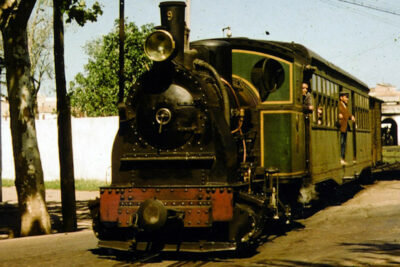 Between 1893 and 1944 a steam tram ran between Las Palmas City and Puerto de La Luz. The line was electrified in 1910, although the line reverted to steam traction in 1944, when trams were hauled by a steam locomotive known as La Pepa. A reproduction of this locomotive is now on display in the Elder Museum in Las Palmas.[2]
Between 1893 and 1944 a steam tram ran between Las Palmas City and Puerto de La Luz. The line was electrified in 1910, although the line reverted to steam traction in 1944, when trams were hauled by a steam locomotive known as La Pepa. A reproduction of this locomotive is now on display in the Elder Museum in Las Palmas.[2]
A plan to build a north-south rail link began with the building of an experimental tren vertebrado (“vertebrate train”) track in Las Palmas between 1972 and 1974. The transit system, designed by Basque engineer Alejandro Goicoechea, consisted of an unusual low-profile train running on elevated concrete tracks through Las Palmas. The project was unsuccessful and was dismantled within a year.[3]
Plans to develop a rapid transit railway line on Gran Canaria linking the capital with San Bartolomé de Tirajana in the south were put forward in the early 21st century by the Gran Canaria Cabildo. The line would run along the eastern coast and connect Las Palmas with the airport.[4] In 2004 the Spanish Ministry of Development put a contract out to competitive tender for a feasibility study on a 50 km railway line from Las Palmas to Maspalomas.[1]
Originally, it was planned to construct the railway in phases, with an initial phase consisting of a line running between San Telmo Park in Las Palmas and El Veril Beach on the edge of Playa del Inglés. In future phases the line could be extended northwards into central Las Palmas, with a terminus at Santa Catalina park, and at the southern end the line would be extended through Maspalomas to terminate at Meloneras.
In 2009 the plans were approved by the Autonomous Government of the Canary Islands, and a planned operational date was given as 2015. The Cabildo’s Autoridad Única del Transporte de Gran Canaria formed a public company called Ferrocarriles de Gran Canaria to manage the construction project.[5] The total cost of the scheme was estimated at €1.5 billion.[6]
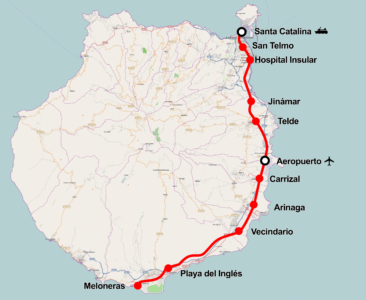 The Cabildo applied to Spain’s central Government for funding for the project, but the scheme did not progress due to budgetary constraints. Between 2009 and 2018, the Spanish Ministry of Development and the Cabildo had spent €22.42 million on preparatory work for the new railway line. In January 2018 the Ministry of Development and the Cabildo announced that almost all the contracts had been awarded to enable construction to go ahead, including alterations to the route. Funding of €25.28 million has been awarded to the project by the Spanish state.[7] However, there are still some funding difficulties that prevent the beginning of the construction on the line and the railway.
The Cabildo applied to Spain’s central Government for funding for the project, but the scheme did not progress due to budgetary constraints. Between 2009 and 2018, the Spanish Ministry of Development and the Cabildo had spent €22.42 million on preparatory work for the new railway line. In January 2018 the Ministry of Development and the Cabildo announced that almost all the contracts had been awarded to enable construction to go ahead, including alterations to the route. Funding of €25.28 million has been awarded to the project by the Spanish state.[7] However, there are still some funding difficulties that prevent the beginning of the construction on the line and the railway.
As of June 2019 the cost of the scheme has been estimated as €1.65 billion. The Cabildo de Gran Canaria has applied to the European Regional Development Fund (ERDF) for 85% funding for the project, while the remaining 15% will be raised through funding from local and regional government and from private finance.[8]
In November 2022 The Cabildo de Gran Canaria produced their BIM modelling and made the plans available for public consultation, which ended in April 2023. The Cabildo are now aiming for the environmental impact statement that will allow for the start of the project once funding has been confirmed.

